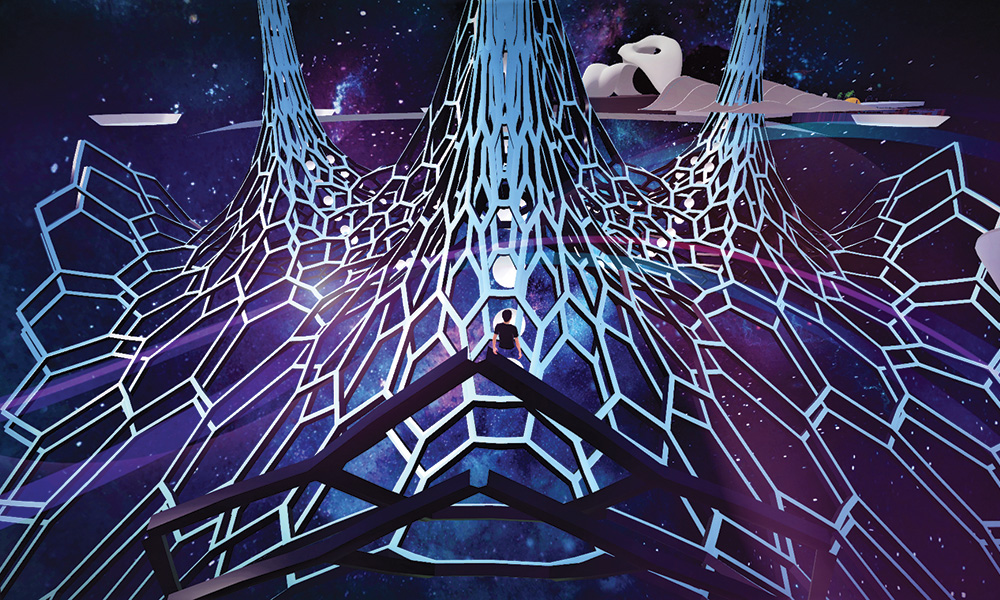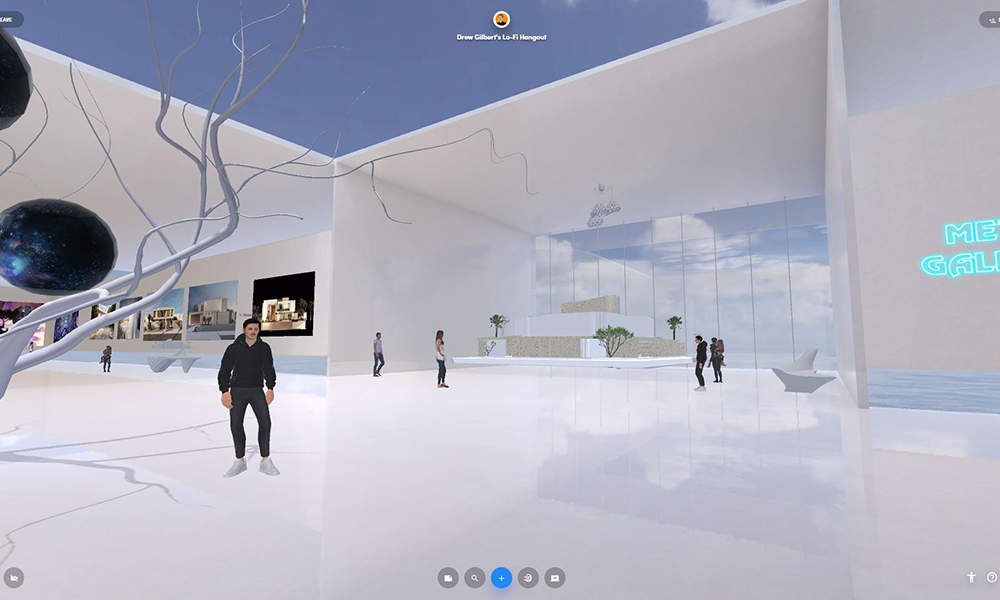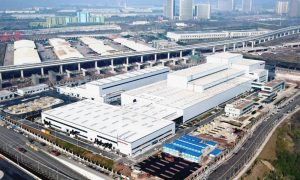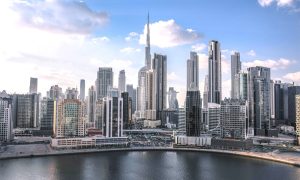Into the Metaverse: Fusing the real world with the digital
Drew Gilbert, Design Manager at OBM International, looks at the opportunities presented by the Metaverse for the AEC industry

A new architectural era is among us, the creation of place making has teleported to a parallel world. A realm that bypasses physical constraints of materiality, structural integrity and enclosure from the physical elements. This has unleashed a new kind of reconceptualisation of what architecture is, what it can be, and how we will experience it.
As the Metaverse concept has been around for decades, it has become a buzzword with the announcement of Facebook becoming Meta and billions of dollars being invested into Metaverse technologies. Experiencing the internet will have a new connotation as we enter ourselves into the 2D screen into a fully immersive 3D world; a 3-Dimensional world of connectivity that enables users to shop, visit friends and family, meet with colleagues and clients all in one place. We must ask ourselves the question on how to best utilise this evolving technology to enrich our lives and the built environment.
A 3-Dimensional World of Connectivity
The Metaverse will become a collection of fully immersive real-time environments interlinked/interoperable with one another where users (in the form of avatars/meta personas) can interact with the environment and each other either for business/entertainment purposes in decentralised and co-created worlds. In short, the Metaverse is a virtual reality version of the internet where the outside will be shared as a digital form. It is all possible thanks to the emergence of Web3.0 technology, a world driven by data, decentralisation, and user autonomy.
The easiest way to visualise the transition from Web2.0 to Web3.0 is like moving from 2D to 3D. The existing protocols and services of today’s internet will still be visited, however with Web3.0, we will start to see services built on permissionless blockchains with open protocols, open standards, and built within open “worlds”. This provides massive opportunities for individual users, content creators, and businesses to expand and explore the latest evolution of the internet. While the infrastructure behind Web3.0 is still in the works, the future of the internet looks promising and it’s arriving faster than we think.
Shifting paradigms
The primary aspect of architecture was intended to provide shelter to human beings from external actors, in the Metaverse this is no longer the case. An entire new world of possibilities has been unlocked. What kind of expression, creativity, and design has become possible? As technology advances, the philosophies continue to evolve.
Each Metaverse platform has a set of rules, for example a set plot size that may limit the height and footprint, polygon count that may limit the detail of the design, or even a cap on the number of users that can access at once, these new constraints will create a new kind of architecture and it will continue to adapt as the Metaverse evolves. The methods of conceptualising architecture in the Metaverse will need to be re-imagined.

As architects building and shaping the future of Metaverse architecture, we will start to incorporate aspects of multiple fields, for example user interface, content design, character design, landscape development, block-chain based protocols, and even game design. Within the Metaverse there will be multiple virtual worlds that contain a mix between both the physical and digital world, where people can experience and engage in a vast range of activities.
Most activities will be centred around social activities like meeting with friends, clients, and loved ones, but there is also a utility aspect that can enable education to be easily accessed around the world, or even have easy access to governmental agencies and healthcare that are operated 24/7 by expert digital assistants.
Each of the current Metaverses offer different possibilities; a creator entering the Metaverse must first ask what the most important aspects are of what they are trying to achieve. Aspects like daily user count, age and demographics of users, open or closed platforms (either enable full freedom of creation or to work within a “design” framework) along with other factors will determine which Metaverse platform will best suit their needs. Entering a Metaverse may or may not require the purchase of digital land in the form of a Non-Fungible Token (NFT) and purchased with the native cryptocurrency of the platform.
The structures in the Metaverse are made of polygons or voxels that is defined as three dimensional pixels. Each one of the current Metaverses offer different options – some provide a sprawling, colourful, low poly wonderland, while others still expand to more tightly detailed worlds that focus on high-quality renders that explore niche ideas. And others still use cubes as a standard building block for each ethereal build and an ingrained emphasis on recreating an Earth-like world.
Opportunity to decarbonise the Earth
As we are heading towards the next big-tech paradigm shift, we must consider the impacts it may have on our planet. Many blockchains such as Ethereum verify transactions through a method called “Proof-of-work” and this process is an energy consuming process where hundreds of computers on a network solve complex cryptographic puzzles to verify transactions. Simply put, every transaction that is made using cryptocurrency on a PoW blockchain is energy consuming. The amount of energy consumed for the blockchain along is estimated to be 150TW-hours annually.
Luckily, there are hundreds of blockchains all working towards a more sustainable future. Ethereum network which is the major network that powers the majority of the virtual transactions will be rolling out the next generation that will move to “Proof-of-Stake”, which reduces energy consumption while providing the same transaction verification. In addition to recycling e-waste and setting up 100% renewable energies datacentres, for example, Google and Microsoft are setting up run data centres on completely carbon-free energy by 2030.

Another way the Metaverse can help in that is by using digital twins. Digital twins represent the physical world and allow users to interact with these digital replicas from anywhere and in a number of productive and efficient ways. They are especially effective in helping to control energy usage and carbon emissions.
The options are limitless, and the opportunities being presented by governments all over the world are making it more attractive and affordable to rethink how technology can help reduce greenhouse gasses. The 3D digital twin showcases a scaled layout of the facility and offers a virtual walkthrough that can be manipulated and viewed from multiple planes. To start tracking your commissions, decarbonising your work force and industries, eliminating paper waste, reducing the need to prototype multiple times, and it’s a great place for digital twins to solve it.
Read more:
- Web3 transforming UAE real estate landscape – DAMAC Properties’ GM says
- Entering the Metaverse: What does it mean for the Construction Sector? | Digital Construction Summit 2022
- Virtuzone launches ‘The V’ tower in the Metaverse

























